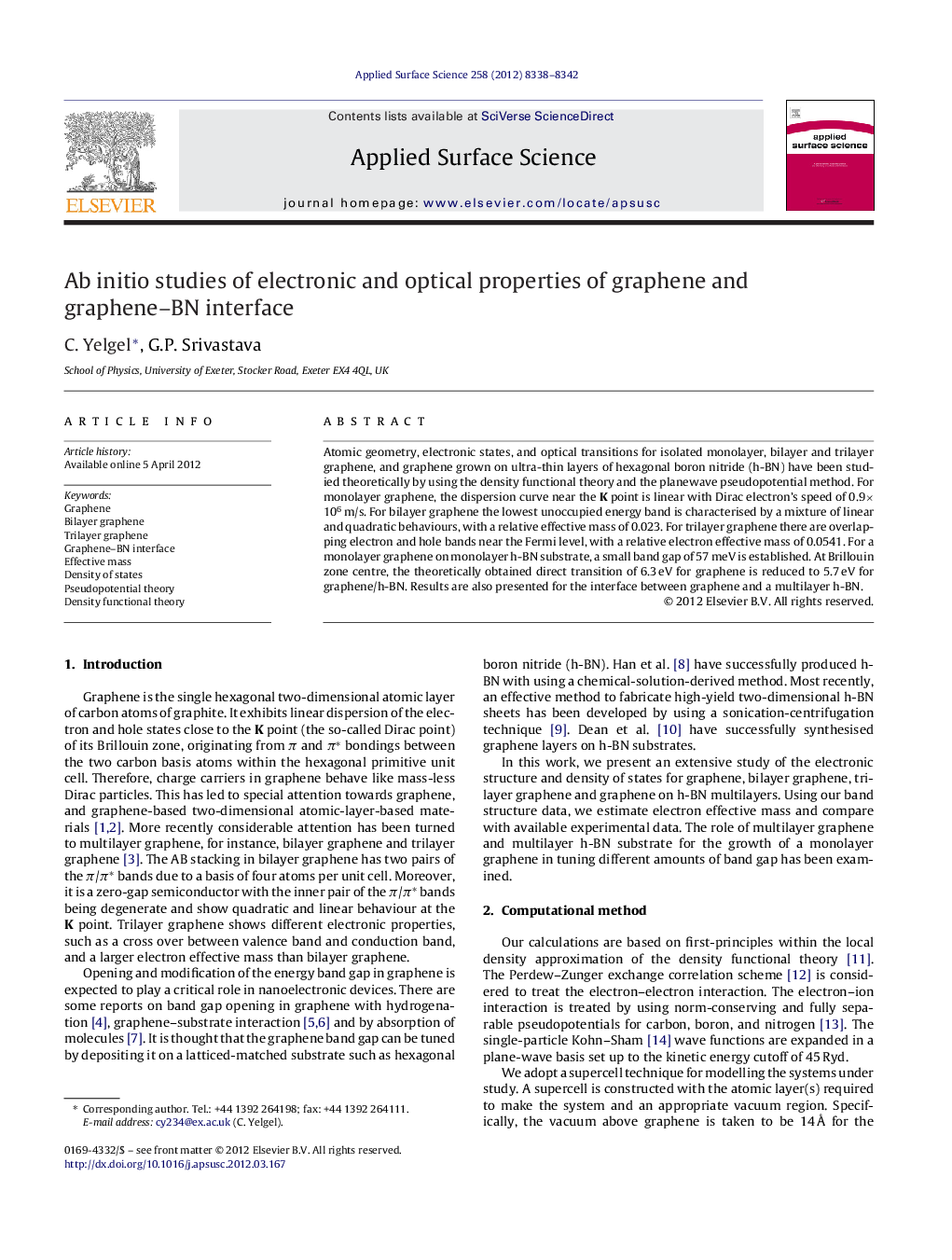| کد مقاله | کد نشریه | سال انتشار | مقاله انگلیسی | نسخه تمام متن |
|---|---|---|---|---|
| 5364903 | 1388322 | 2012 | 5 صفحه PDF | دانلود رایگان |

Atomic geometry, electronic states, and optical transitions for isolated monolayer, bilayer and trilayer graphene, and graphene grown on ultra-thin layers of hexagonal boron nitride (h-BN) have been studied theoretically by using the density functional theory and the planewave pseudopotential method. For monolayer graphene, the dispersion curve near the K point is linear with Dirac electron's speed of 0.9Ã 106Â m/s. For bilayer graphene the lowest unoccupied energy band is characterised by a mixture of linear and quadratic behaviours, with a relative effective mass of 0.023. For trilayer graphene there are overlapping electron and hole bands near the Fermi level, with a relative electron effective mass of 0.0541. For a monolayer graphene on monolayer h-BN substrate, a small band gap of 57Â meV is established. At Brillouin zone centre, the theoretically obtained direct transition of 6.3Â eV for graphene is reduced to 5.7Â eV for graphene/h-BN. Results are also presented for the interface between graphene and a multilayer h-BN.
⺠Systematic theoretical investigation of atomic structure of graphene and its interface with boron nitride. ⺠Detailed analysis of electronic structure of graphene and graphene/BN. ⺠Ab inito calculation of surface dipole.
Journal: Applied Surface Science - Volume 258, Issue 21, 15 August 2012, Pages 8338-8342